Regional Banking
As one of antebellum America’s largest port cities, New Orleans drew planters, merchants, visitors, and laborers from around the country. Those traveling with money from other regions could visit a New Orleans bank to exchange their notes for local currency, according to rates published weekly in Louisiana newspapers. The less known and more distant the issuing institution, the worse the exchange rate.
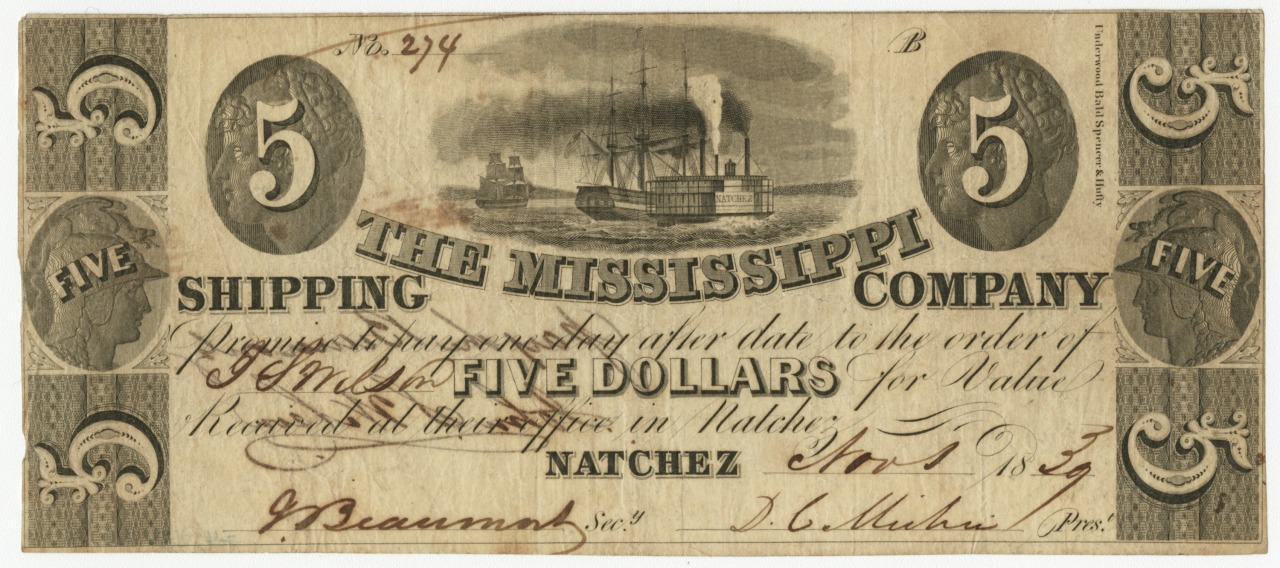
Mississippi Shipping Company five-dollar note
November 1, 1839; engraving
by Underwood, Bald, Spencer, and Hufty, printer
The Historic New Orleans Collection, 1974.25.22.4
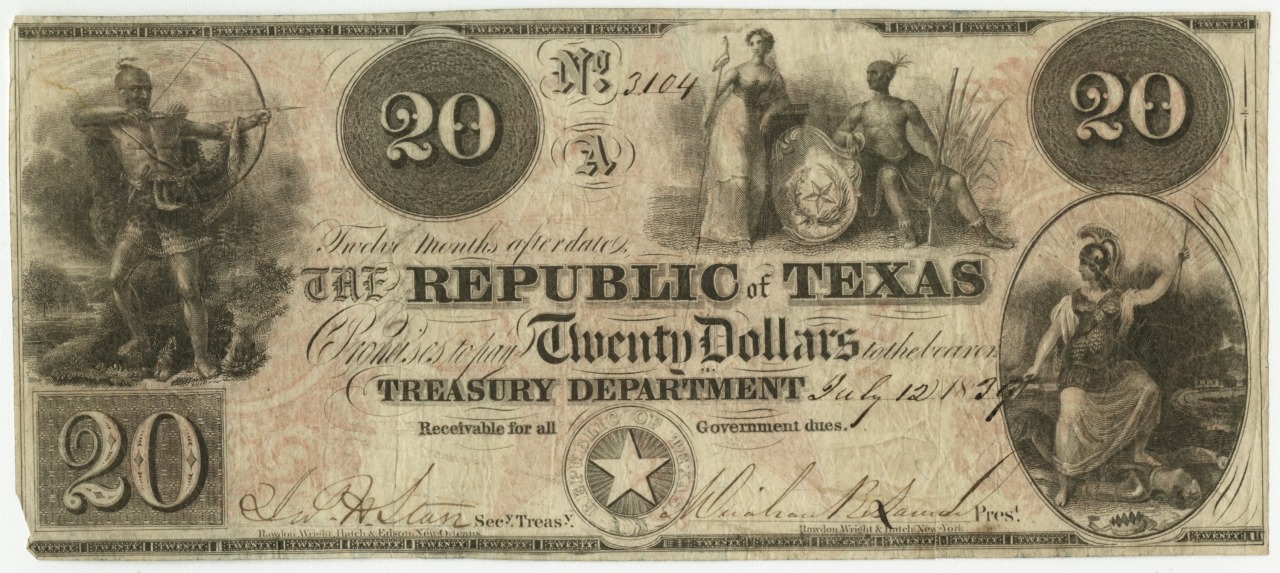
Republic of Texas twenty-dollar note
July 12, 1839; engraving
by Rawdon, Wright, Hatch, and Edson, printer (New Orleans or New York)
The Historic New Orleans Collection, 1989.123.2
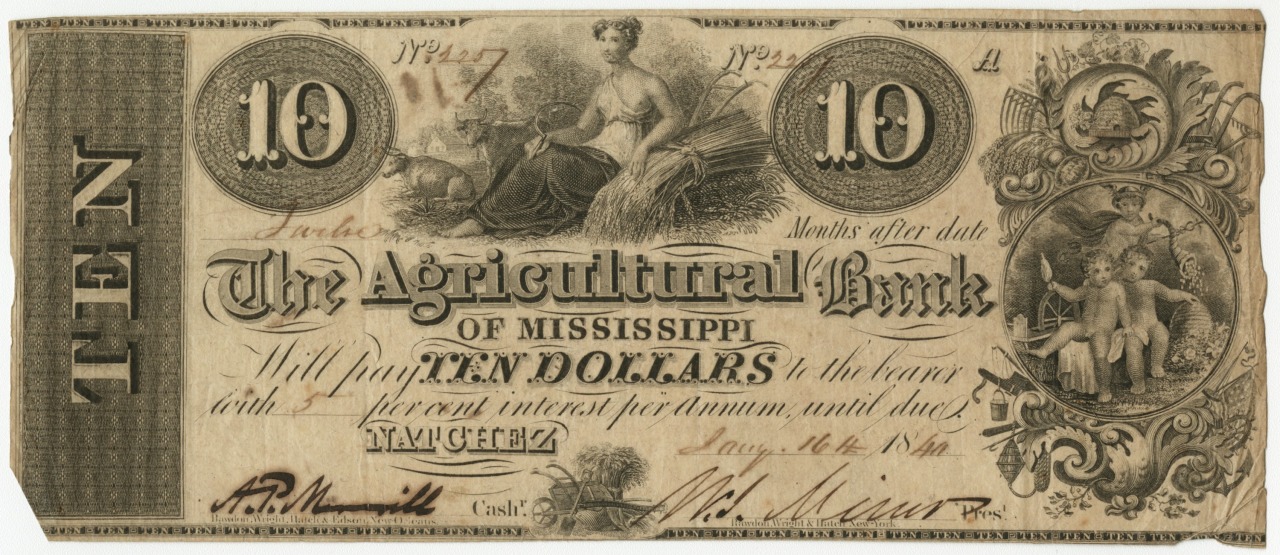
Agricultural Bank of Mississippi ten-dollar note
January 16, 1840; engraving
by Rawdon Wright, Hatch, and Edson, printer (New Orleans or New York)
The Historic New Orleans Collection, 1979.24.1
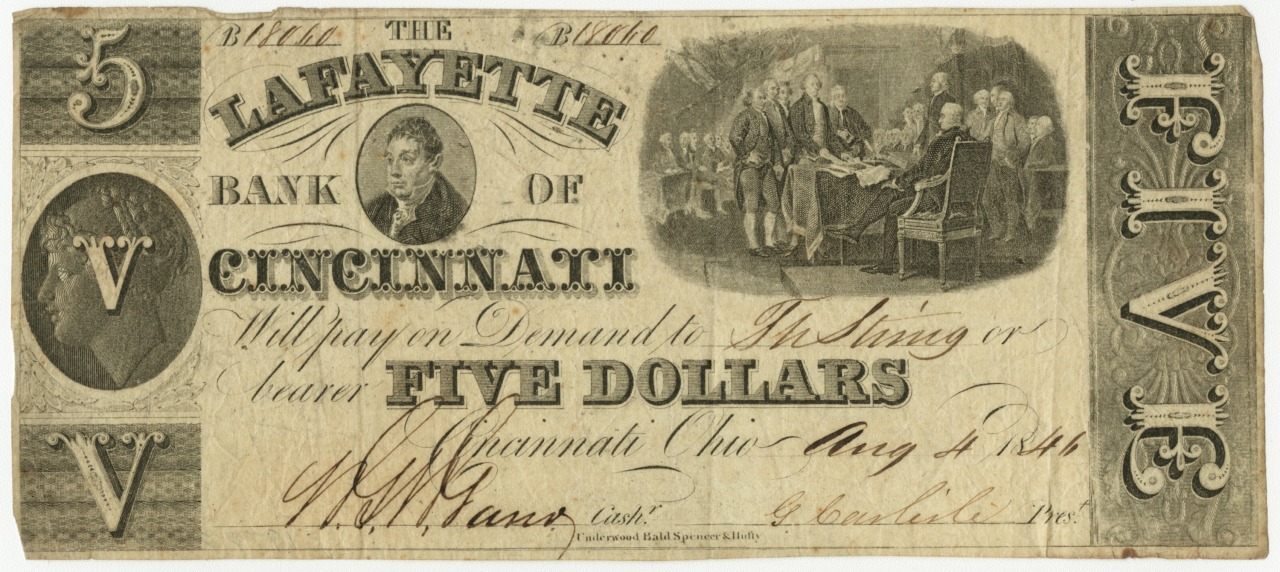
Lafayette Bank of Cincinnati five-dollar note
August 4, 1846; engraving
by Underwood, Bald, Spencer, and Hufty, printer (Philadelphia or New York)
The Historic New Orleans Collection, 1979.24.2
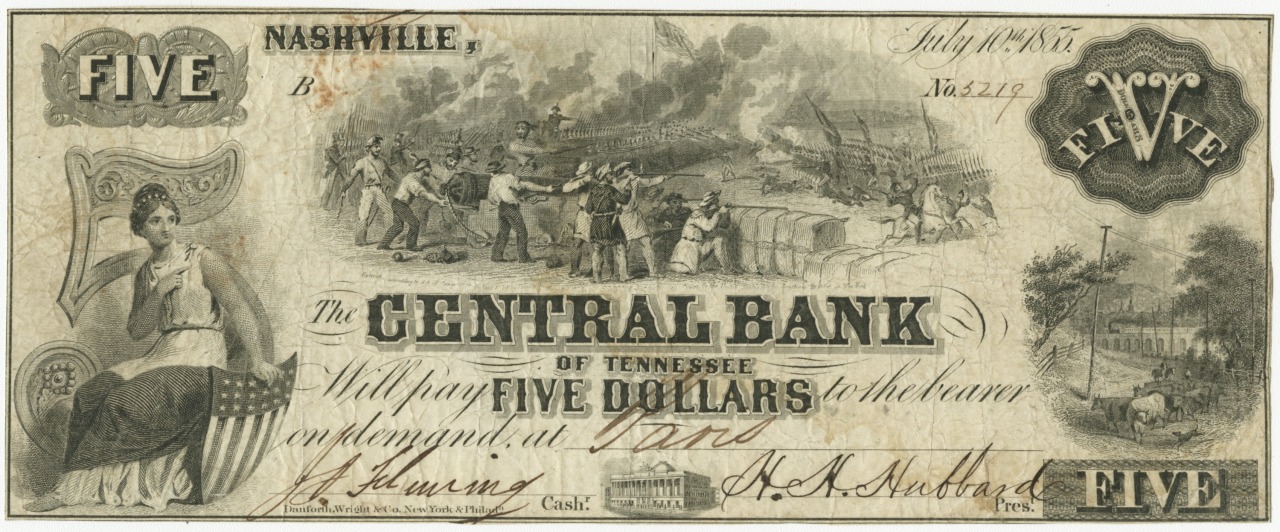
Central Bank of Tennessee five-dollar note
July 10, 1855; engraving
by Danforth, Wright, and Company, printer (Philadelphia or New York)
The Historic New Orleans Collection, 1989.95.34
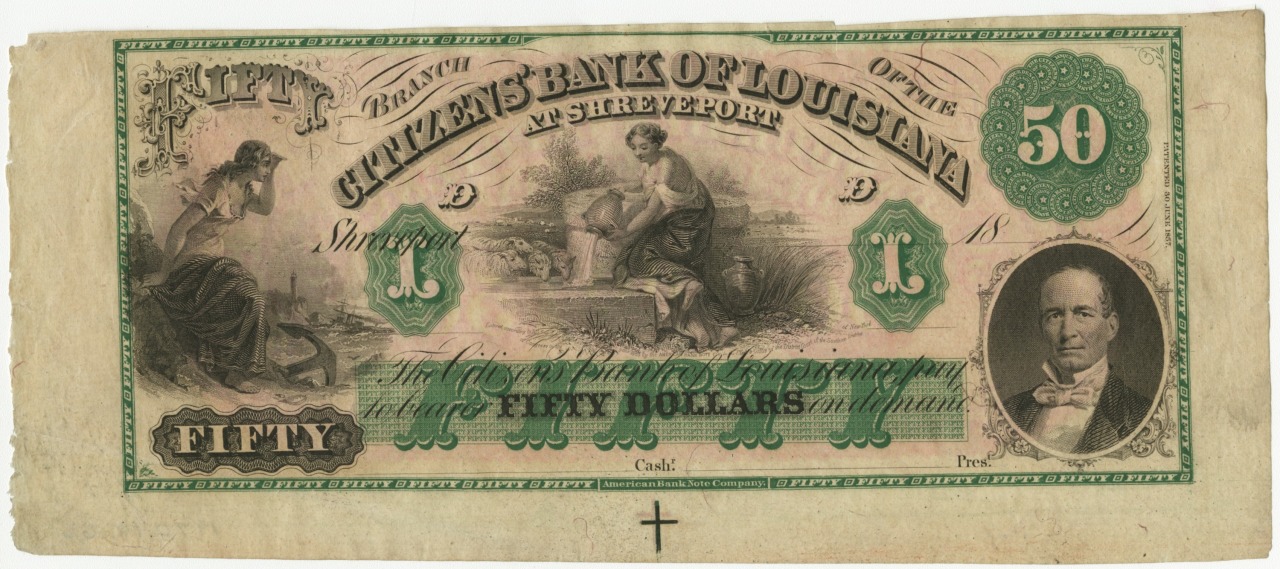
Citizens’ Bank of Louisiana at Shreveport fifty-dollar note
June 30, 1857; engraving
by American Bank Note Company, printer
The Historic New Orleans Collection, 1970.19.66
